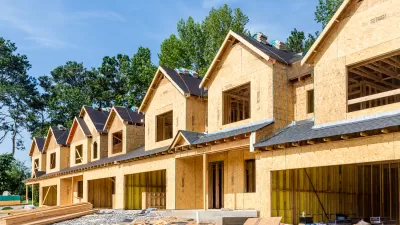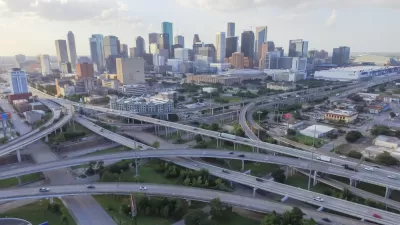An op-ed in the New York Times provides a firsthand account of the growing concern over water in a state that has yet to set limits on its explosive growth.
Richard Parker writes a dispatch from his hometown of Wimberley, Texas. "Normally, my small town is a placid place nestled in the Texas Hill Country, far from controversy, a peaceful hour’s drive west of Austin," explains Parker.
"But these are not normal times. The suburbs of Austin close in every year. Recently, the suburb of Buda and developers enlisted a company from faraway Houston to drain part of the Trinity Aquifer, the source of the Hill Country’s water. An old-fashioned, Western-style water war has erupted.
Across Texas and the Southwest, the scene is repeated in the face of a triple threat: booming population, looming drought and the worsening effects of climate change."
Parker goes on to provide a history of water's empowering effects for Texas when it is in full supply and its catastrophic effects when it disappears, as it did for "the people called the 'Ancient Ones' — the Mimbres, Mogollon, Chaco and other Native American cultures," which flourished around 800 CE and had all but disappeared by 1200 due to a prolonged drought and poor management of water resources.
Parker also notes specific examples of the "race to engineer a new solution," but while cities like Austin, San Antonio, Las Vegas, and Los Angeles hang in the balance, the question still remains whether the Southwestern United States can overcome a megadrought.
FULL STORY: The Southwestern Water Wars

Pennsylvania Mall Conversion Bill Passes House
If passed, the bill would promote the adaptive reuse of defunct commercial buildings.

Planning for Accessibility: Proximity is More Important than Mobility
Accessibility-based planning minimizes the distance that people must travel to reach desired services and activities. Measured this way, increased density can provide more total benefits than increased speeds.

Fair Housing Cannot Take a Back Seat to ‘Build, Baby, Build’
If we overlook fair housing principles in the plan to build US housing back better, we risk ending up right back where we started.

LA Metro Board Approves New 710 Freeway Plan
The newest plan for the 710 corridor claims it will not displace any residents.

Austin’s Proposed EV Charging Rules Regulate Station Locations, Size
City planners say the new rules would ensure an efficient distribution of charging infrastructure across the city and prevent an overconcentration in residential areas.

Making California State Parks More Climate-Resilient
A recently released report offers recommendations for keeping state parks healthy and robust, including acquiring additional land for conservation and recreation.
City of Costa Mesa
Licking County
Barrett Planning Group LLC
HUD's Office of Policy Development and Research
Mpact Transit + Community
HUD's Office of Policy Development and Research
Tufts University, Department of Urban and Environmental Policy & Planning
City of Universal City TX
ULI Northwest Arkansas
Urban Design for Planners 1: Software Tools
This six-course series explores essential urban design concepts using open source software and equips planners with the tools they need to participate fully in the urban design process.
Planning for Universal Design
Learn the tools for implementing Universal Design in planning regulations.


























